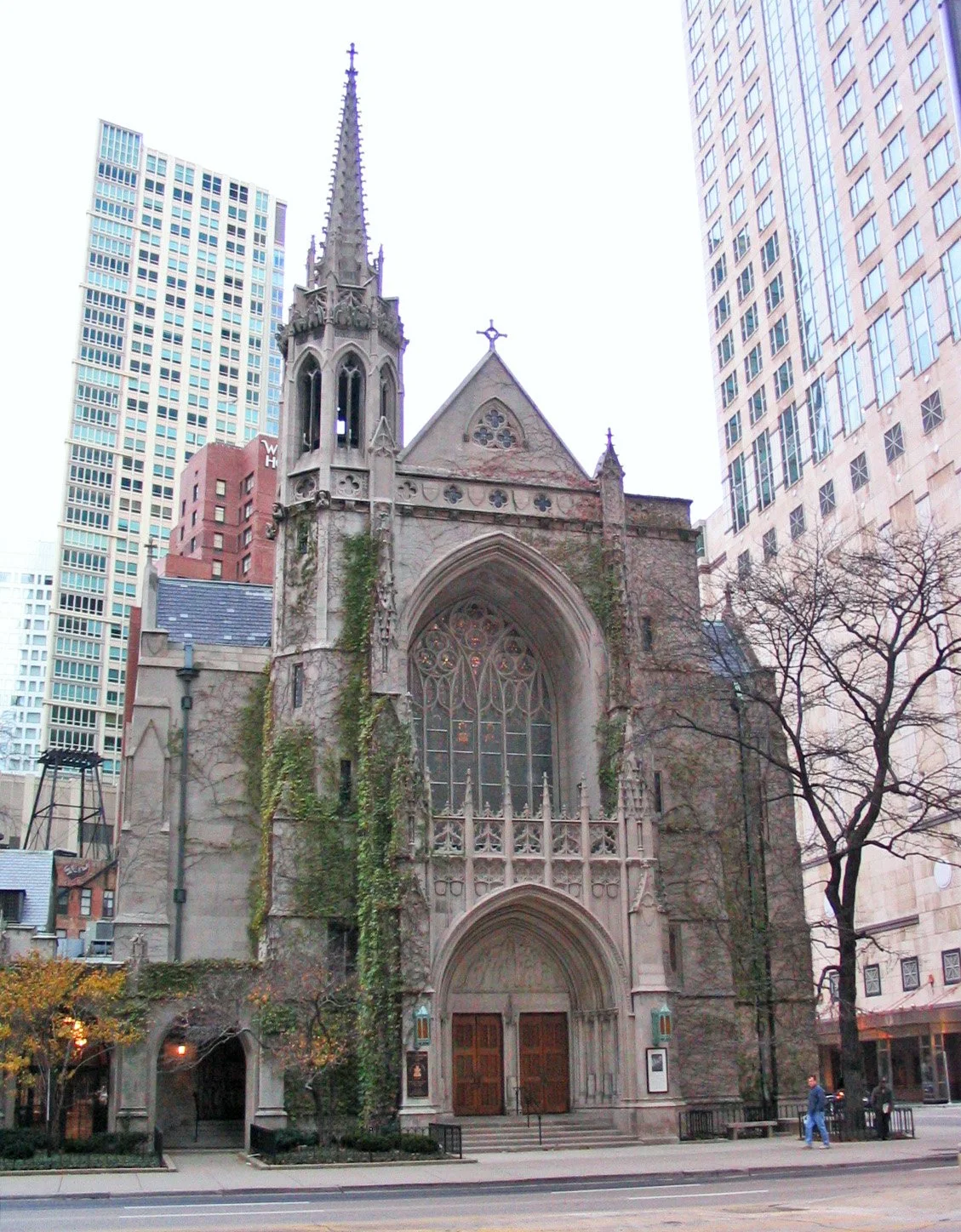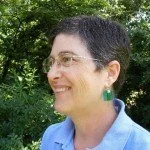Churches and Public Space
09-16-2014
By Deborah Kapp
What sort of public space is a church? My congregation has a grand space that sits right on Michigan Avenue in Chicago. During the day, from 9am to 6pm or thereabouts, the sanctuary is open to anyone who would like to come in and sit for a while. A cloistered area that abuts the sanctuary often hosts an art exhibit that is open to the public. Nestled in the u-shaped building is a perfectly lovely garden that was designed by one of my best church friends, who is also a master gardener (and a musician). In it sits a bench we just dedicated in memory of another friend, who served the church as an associate pastor for over 35 years. Whenever the weather is nice people visit the garden, sit around and maybe have lunch, and enjoy this lovely green space in the middle of a bustling commercial section of the city.
What sort of public space is my church? It makes a space for passers-by who seek spots of peace and quiet in the city. So, it’s a physical public space. But, through ministries of every description, it also engages the public in many other significant ways that are less visible to Michigan Avenue walkers. It’s a vibrant and expansive church that ministers 7 days a week in dozens of different ways, with social service, issue advocacy, fellowship, and education for diverse groups of people. It is also, then, a social public space.Kevin Lynch might have called it a “node,” a site where people converge, where their paths cross like intersections, a central junction on their journeys.
A church can also be a public space that promotes the common good. Believe it or not in the late 1950s the church to which I then belonged sponsored sex education for our entire community in the southern suburbs of Pittsburgh. Sex education. In a church. When I was in fifth grade there was a big meeting for mothers and their daughters, held in the fellowship hall of our church. The speakers were two women, our Christian Educator and a local woman physician. They presented information about menstruation, showed slides with diagrams and pictures, and explained what was going to be happening to our young bodies. They encouraged our moms to go home and talk with us about this. They took questions (of course, I don’t think any of us were bold enough to raise our hands, but maybe our moms did). They told us that we could come and talk with them any time about this. It was pretty amazing. It was even more amazing in sixth grade when they held a similar meeting, at which they told us all about what men and women did together in order to make babies. My mother had already imparted this information to me, I’m happy to say, so the facts were not as shocking as they might have been. We were pretty protected, back in those days.
The church had similar meetings and information sessions for boys and their dads. I am confident they made arrangements for kids who lived in single parent families, of whom there were very few.
That they had these meetings at all is astonishing to me, especially given all the “Christian” objections that are raised when people try to do sex education in public schools. But, I have to say, this was such a significant public service. Despite the wooden presentations and the palpable embarrassment in those rooms—I mean, we couldn’t even look at each other we were so embarrassed—the church’s willingness to educate young people and talk with us openly about real life, our bodies, and our futures was wonderful. It provided an important service, and it also made clear that the church was invested in the well being of kids and their community. I’m convinced that having formative, open minded, and nurturing experiences like these sex education meetings are why I have stayed in the progressive Presbyterian wing of my denomination.
Churches can and should be public spaces that serve the common good. So often we resist that impulse, because following through on serving the public good usually means taking some kind of stand, even if it is just a common sense one like educating kids about their bodies and human relationships. Our cities need more from their religious institutions than providing pretty spaces and Sunday morning sanctuary. Our cities need us to step up to the plate and make meaningful contributions to human well being. I am proud when the churches to which I belong can do that.
Rev. Deborah Kapp is the Edward F. and Phyllis K. Campbell Associate Professor of Urban Ministry at McCormick Theological Seminary in Chicago, where she teaches urban ministry and leadership. You can read this post and other reflections about urban ministry on her blog: Footloose: Thoughts on Urban Ministry.
Fourth Presbyterian Church’s courtyard
Sanctuary functioning as a town hall
Rev. Dr. Deborah Kapp





